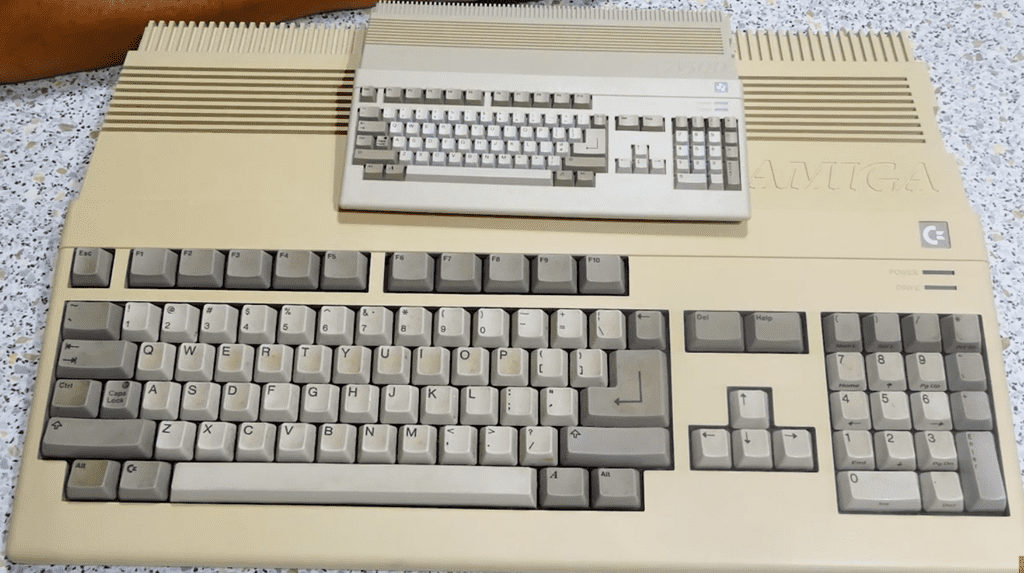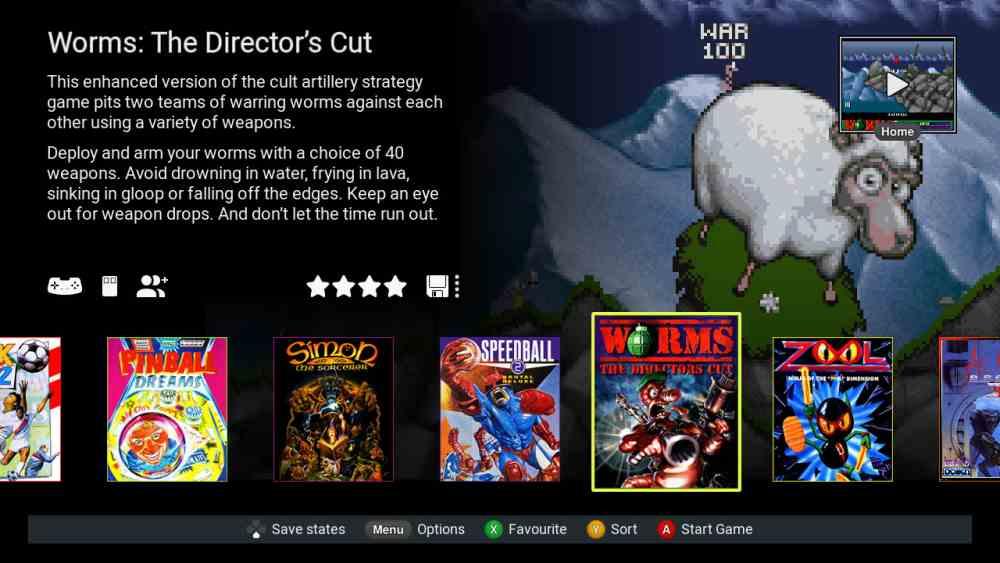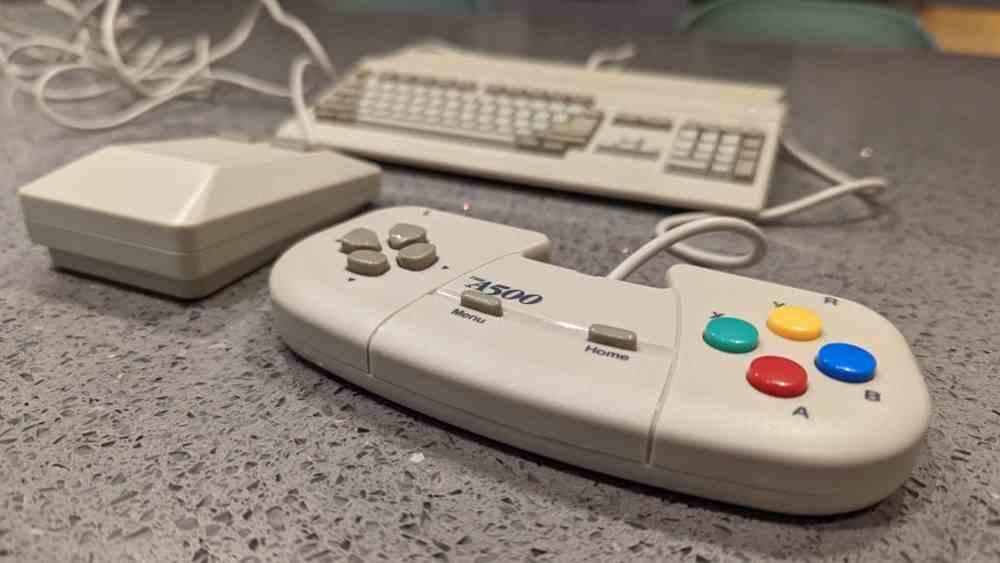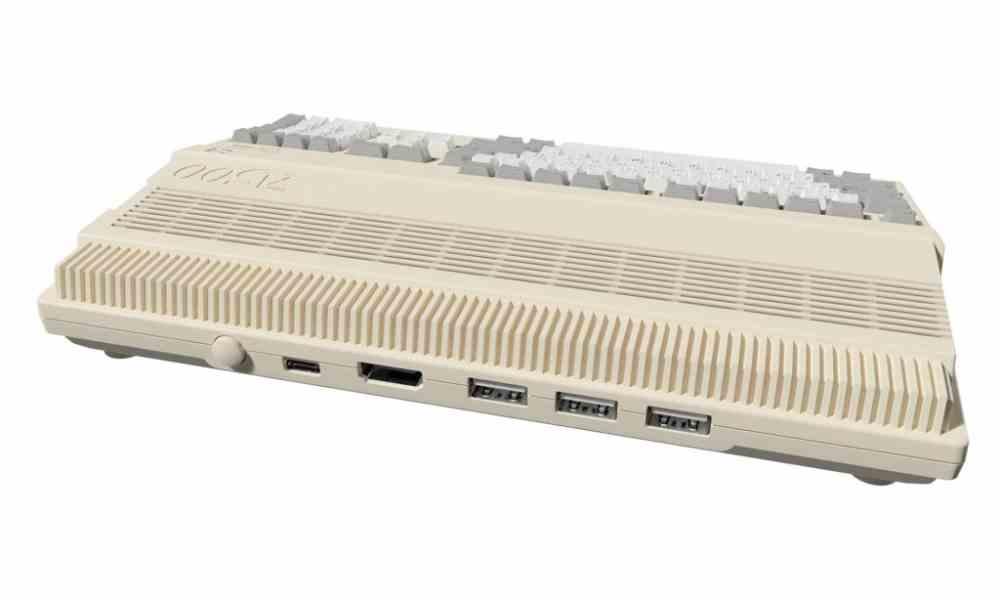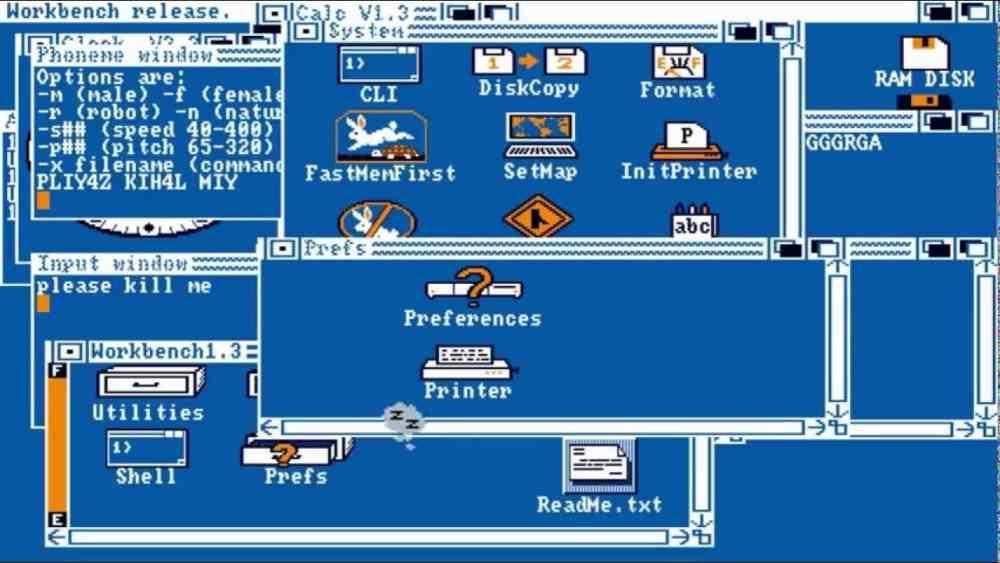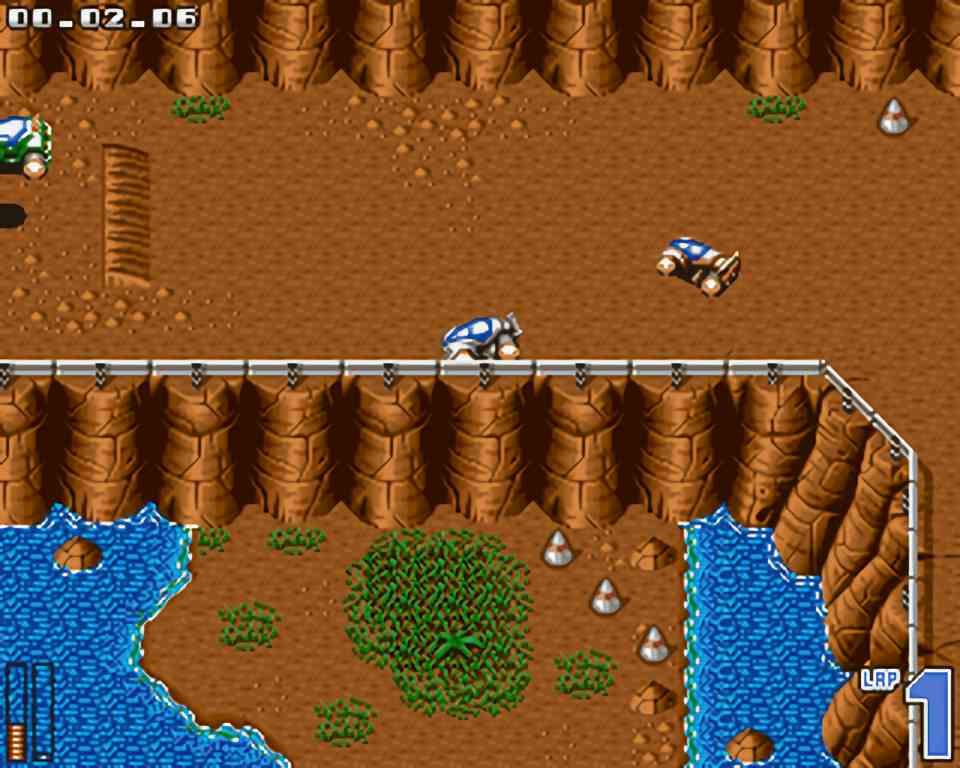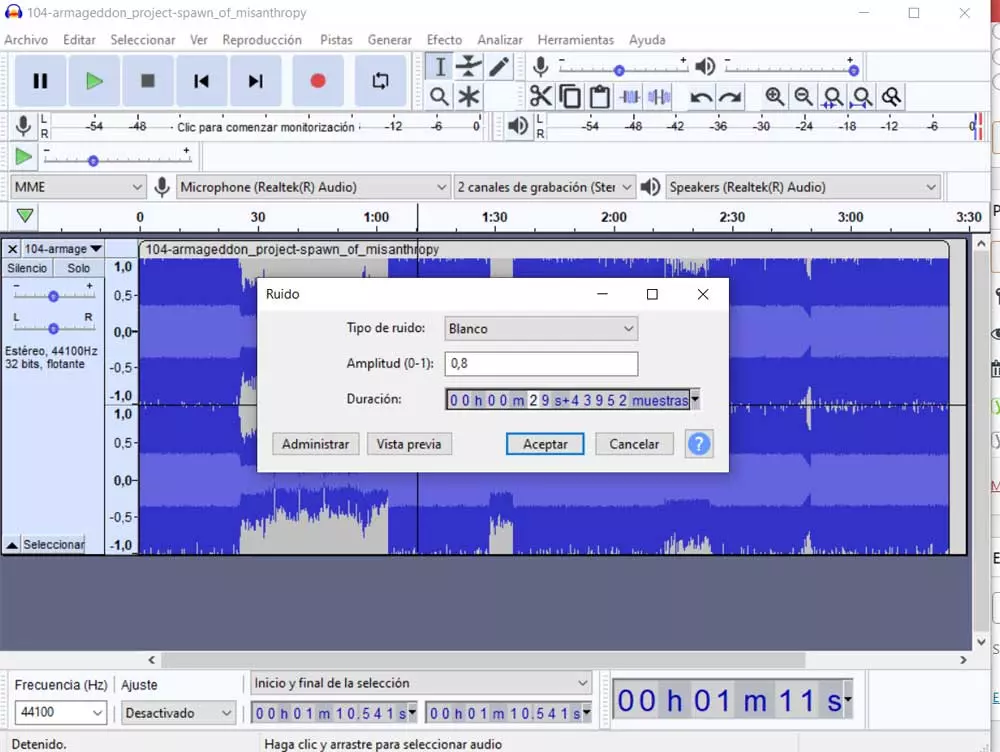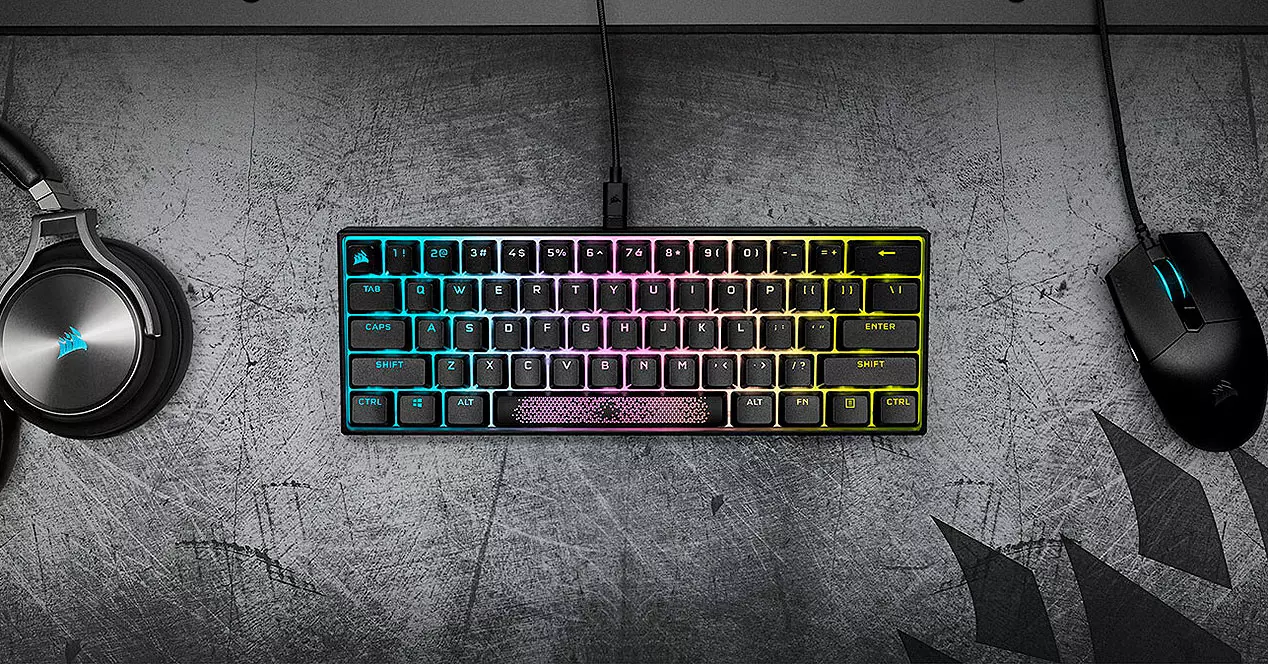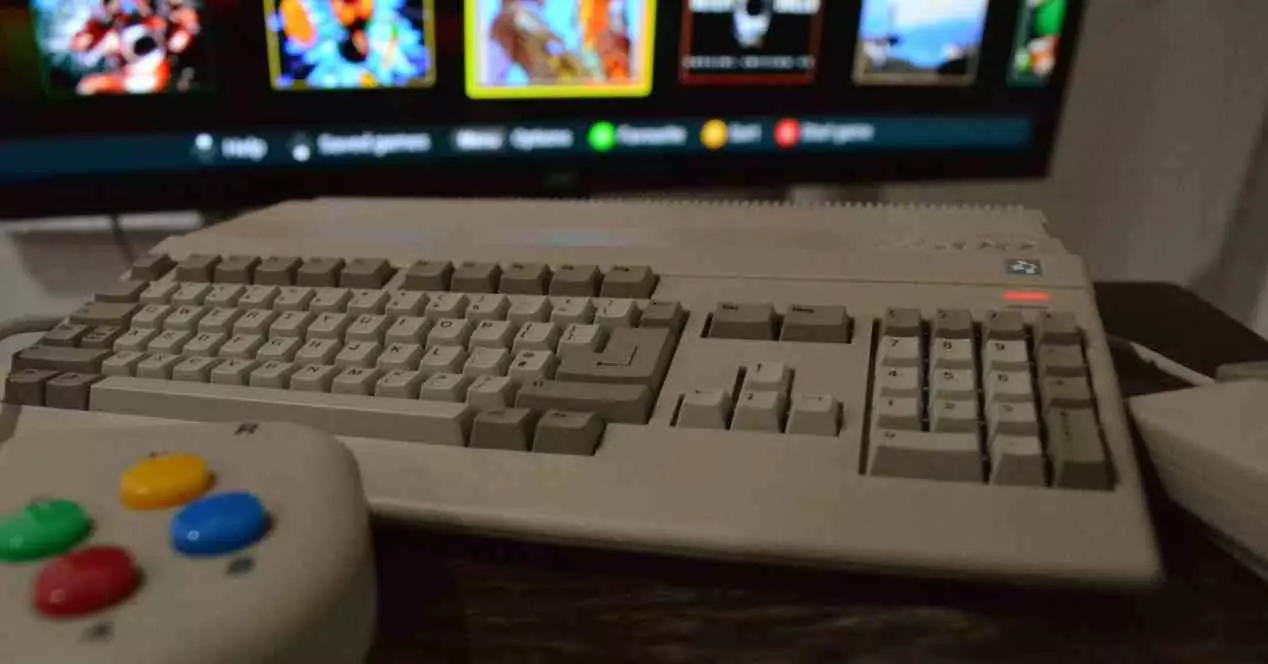
The A500 Mini it is apparently a tribute to the mythical computer of the 80s and early 90s in the form of a mini console. These are nothing more than a miniaturized version of the original system, since they do not share the same internal circuitry. Rather, they are often based on a low-cost mobile processor and a heavily stripped-down version of Linux running an emulator. These have enough power to be able to simulate any 8 and 16-bit system without problems, including both consoles and so-called microcomputers.
The main reason though is the fact that the original hardware used the old tube TVs. Therefore, making a version for screens today would have meant inventing entirely new circuitry just for that purpose. Although there are systems such as the Mister FPGA that simulates the hardware as it is through the use of configurable chips or modifications to the original hardware. The Mini versions of the consoles have become the most suitable for people’s pockets.
A “Mini console” that no one expected
There is no doubt that the Amiga was certainly a hardware revolution, especially in the design of its support chips. The trifecta that was named after Agnus, Paula and Denise. Which together with Motorola’s 68000 were combined to create the most advanced system that existed in the mid-80s. However, the Amiga was a commercial failure of enormous magnitude. It was as good in hardware as it was bad in sales.
In any case, it is what the so-called retrocomputing has and the fact of seeing the past with a romantic perspective. The reality is that every 16-bit computer released in the second half of the 1980s that competed against the PC at the time was a huge commercial flop. Including the Commodore Amiga and its most popular version, the Amiga 500, on which the A500 Mini is based. Of course, we can’t let historical reality spoil a nice story for us.
This is not to say that the Amiga wasn’t revolutionary, hardware-wise, as for a long time it was the most powerful system of all. However, it is laughable that it is said in some places that we are dealing with the most powerful computer of the 80s. Why do we say this? Easy, by 1987 the 386 based IBM PS/2 and VGA cards had already appeared on the market and the first Sound Blaster style sound cards too. Of course, having an Amiga was much cheaper than a PC, but unfortunately almost nobody had it. So the A500 Mini is, on the surface, a chance to own one.
The A500 Mini not faithful to the original product
One of the things that surprises us about the A500 Mini is its list of games, Commodore released several generations with hardware other than its Amiga platform. Think of it as the generation jump from one console to its successor. However, the folks at Retro Games have built games into the system that we wouldn’t have been able to enjoy on the original Amiga 500, as they were designed for higher hardware. Why do we say this? Of the list of 25 games in total that are included as standard, a good part could not have been played on the original Amiga 500 or rather it should have been called A1200 Mini.
The list of games that it includes, pre-installed in its memory, are the following:
- Alien Breed 3D
- Alien Breed: Special Edition 92
- Another World
- Arcade Pool
- ATR: All Terrain Racing
- Battle Chess •
- Corpse
- California Games
- Dragon’s Breath
- F-16 Fighter Pilot
- kick off 2
- android 90
- Pinball Dreams
- Project-X: Special Edition 93
- qwak
- Simon the Sorcerer
- Speedball 2: Brutal Deluxe
- Stunt Car Racer
- Super Cars II
- Chaos Engine (The)
- Lost Patrol (The)
- Sentinel (The)
- Titus the Fox
- Worms: The Director’s Cut
- Zool: Ninja Of The ”Nth” Dimension
The difference with respect to other similar systems is that we will be able to load our games from a USB storage unit, so we are not limited to pre-installed games. There is no interface to connect one of the old Amiga floppy drives, although we do not consider it necessary either, since in terms of access speed it results in a real bottleneck. It really is a luxury to be able to access games at high speed.
Gamepad and keyboard missing on the A500 Mini
Another of the problems that we see is the control knob, at that time the gamepad was synonymous with a video game console. So the joystick was the preferred control method on computers. Did we say this is a computer? The fact that the A500 Mini includes a remote control as standard, instead of a joystick, it seems that the fidelity of the A500 Mini has not been one of its priorities. We are also surprised that have not included 9-pin ports under Atari standard to connect the joysticks for the original system, it is not the same case as with the storage and it would have been a small detail that drops it
Another point, related to the fidelity of the original hardware, is that have not decided to use a full keyboard, honestly we found it a huge blunder and its creators would have had no trouble including one. Since we can load separate games and many of them require the use of a keyboard to work properly. What is the point of doing without something that was in the original system?
This would have resulted in a thicker case, but as we said in the previous section, we would have expected to see a version with a full-size keyboard. Which would give enough space for said ports. Furthermore, although the Amiga 600 is hated by the PC fan community, it would have made sense for the A500 Mini to be based on such a design, which was much more compact than the original Amiga 500. Incidentally, this would have allowed the inclusion of the video outputs of the original system. Just in case anyone wanted to play games on a CRT monitor or screen like back in the day.
Where is the Workbench located?
Although there is something that has surprised us a lot and this is something that we have already seen in the C64 Mini, the fact that the system does not boot is not like in the original. Rather, it does so by displaying the classic game carousel. Let’s not forget that the Amiga was not a console, but a computer with a graphical interface. This is as if someone makes a PC Mini to play games from the Windows 95 era and instead of booting the Microsoft operating system we are presented with a carousel mode menu to select a game. It is more comfortable? Yes, but it is not faithful to the experience of having an Amiga.
The Amiga was not a gaming machine, its capabilities allowed it to be the computer that ushered in graphic design and video editing, while the Macintosh specialized in prepress and the Atari ST in music. Over time the PC would inherit the facets of its rivals. Many will say that the use of these applications today does not make sense as they are outdated. They are right, but we are talking about something that is a tribute and in them preservation is important. So the fact of not being able to use the A500 Mini in the same way as an original Amiga seems to us the biggest mistake of the product in terms of its concept. The computer was more than a gaming system and to reduce it to just a retro console is literally disrespectful to what I mean.
Performance when emulating games on the A500 Mini
One of the most common problems with systems at the time was the fact that each system had two versions. On the one hand, the NTSC versions designed for the American and Japanese markets with the ability to go to 60 Hz but at a lower resolution. While on the other the PAL versions with a screen frequency of 50 Hz although with higher resolution. Which affected when designing the games. The good thing about the A500 Mini is that it has the best of both worlds. So you can play the games with the highest image quality of the PAL versions and at 60 FPS.
This is an advantage compared to going to look for the original hardware today, especially if you live in Europe, since if you get an original Amiga 500, apart from the fact that it will be more expensive, you will have fewer advantages when it comes to running the games. Not only will the system be more expensive, but you are risking having a product that requires repair after a long time without use and that will require expensive modifications to be able to use it with a modern monitor. Not to mention that you will not be able to play the most visually advanced games.
Versus Raspberry Pi and conclusions
On paper and in terms of technical specifications, buying a Raspberry Pi 400 makes more sense than buying an A500 Mini, the reasons are as follows:
- Can emulate various systems seamlesslynot just the Commodore Amiga.
- It is cheaper than the A500 Miniincluding the integrated keyboard version.
- It has a full keyboard in the case of the Pi 400 versionif not, we can even find a case like the original system and with a full keyboard.
- Its included processor is much more powerful than the one used for the A500 Mini.
- Can install Linux distributions optimized to work like the AmigaWhat Pimiga either amiberrywhich give an experience much closer to the original hardware.
So the choice from our point of view is clear when selecting the system with which to recall the classic Commodore Amiga. So our conclusion is that the A500 Mini gives the feeling of having been more of a hearsay product. Which is a shame, since they had everything to make an excellent homage to said 16-bit microcomputer and have fallen by the wayside. Should we wait for an A500 Maxi perhaps?
